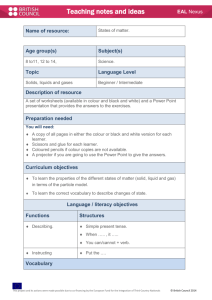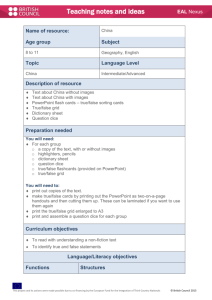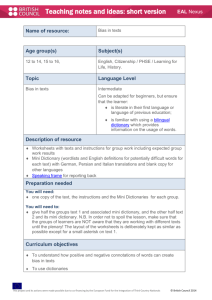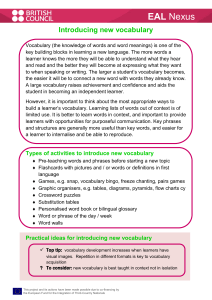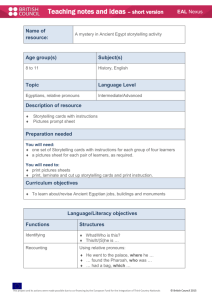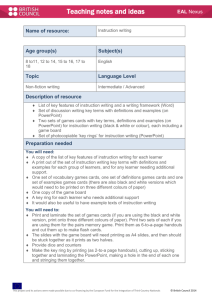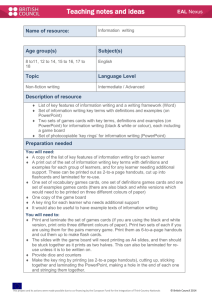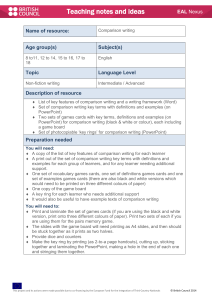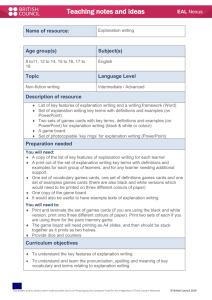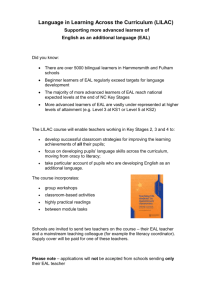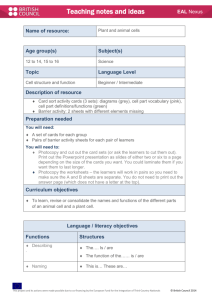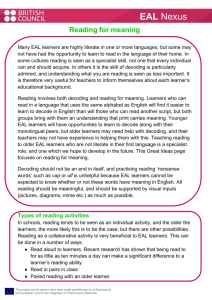Extended version - EAL Nexus
advertisement
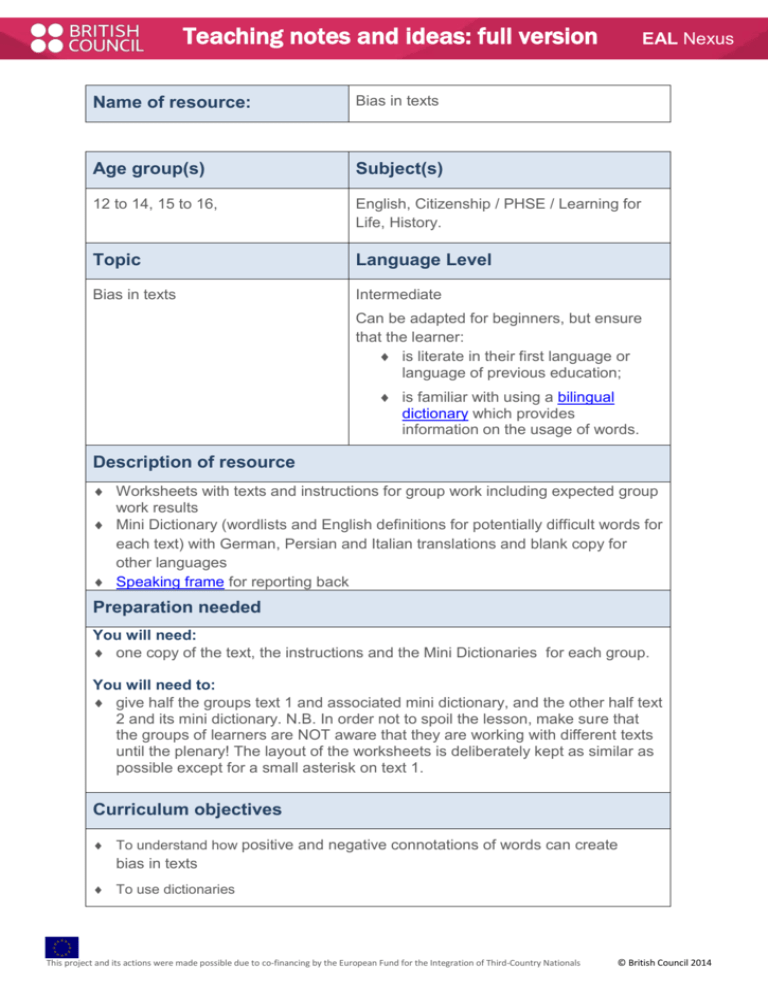
Teaching notes and ideas: full version EAL Nexus Name of resource: Bias in texts Age group(s) Subject(s) 12 to 14, 15 to 16, English, Citizenship / PHSE / Learning for Life, History. Topic Language Level Bias in texts Intermediate Can be adapted for beginners, but ensure that the learner: is literate in their first language or language of previous education; is familiar with using a bilingual dictionary which provides information on the usage of words. Description of resource Worksheets with texts and instructions for group work including expected group work results Mini Dictionary (wordlists and English definitions for potentially difficult words for each text) with German, Persian and Italian translations and blank copy for other languages Speaking frame for reporting back Preparation needed You will need: one copy of the text, the instructions and the Mini Dictionaries for each group. You will need to: give half the groups text 1 and associated mini dictionary, and the other half text 2 and its mini dictionary. N.B. In order not to spoil the lesson, make sure that the groups of learners are NOT aware that they are working with different texts until the plenary! The layout of the worksheets is deliberately kept as similar as possible except for a small asterisk on text 1. Curriculum objectives To understand how positive and negative connotations of words can create bias in texts To use dictionaries This project and its actions were made possible due to co-financing by the European Fund for the Integration of Third-Country Nationals © British Council 2014 EAL Nexus Language / literacy objectives Functions Structures Describing Simple descriptive sentences in the simple present tense Justifying …because… Vocabulary Positive, negative, neutral, bias, respect, shun, favourable, unfavourable, writer, reader, character Descriptive language that is: Positive: slim, distinguished, sparkles, sincere, comfy Negative: lanky, skinny, gloomy, tatty, sweat glistens, untidy Neutral: pale, tall, informally, bald, receding hairline This resource could be used: whole class as differentiation within class Ideas for using the resource What to do Ask learners to sit in groups (at least four groups and – if possible – an even number of groups). Mixed ability groups are advisable to allow peer support. Explain that each group will get the description of a person with words they might need to look up. Point out that the groups have dictionaries or Mini dictionaries to help them understand the text. More advanced learners could use full dictionaries. Go through the instructions for the group work, encouraging the groups to work independently and to use exploratory talk. Ask every group to write their names on their picture and put it (and nothing else) on the board / wall / desk. Ask learners to have a look at the pictures of other groups and discuss in their group differences and similarities. Explain that they all drew the same person, Jake’s uncle, but from different descriptions with different bias. This project and its actions were made possible due to co-financing by the European Fund for the Integration of Third-Country Nationals © British Council 2014 EAL Nexus One learner reads out the negative description and one the positive description and explains why the group did or didn’t like the character, and which end sentence they chose and why. The speaking frame can be used here if required. Discuss why people can be respected or shunned on the basis of looks/first impressions. Let pupils draw the conclusion that the choice of words can manipulate the reader. Record conclusion on the board, e.g. In stories writers tell you their opinions of their characters by the words they choose to describe the character’s looks and personality. The choice of words tells you whether the writers want their readers to like their characters (favourable point of view) or dislike them (unfavourable point of view). Other ideas for making the best use of this resource This resource provides opportunities for using the learners’ first language ability. Before using the resource you could ask a bilingual member of staff or parent to translate the word lists (Mini Dictionaries) into languages spoken in your class Another strategy is to give newly arrived bilingual learners one of the texts and the word list to preview (e.g. homework or in a 1:1 session with a bilingual classroom assistant). Ask them to translate the words and write the translations down. Possible extension activities Find the adjectives among the description words. Ask learners to form comparatives and superlatives. Ask every group of learners to find synonyms in a thesaurus for one of the adjectives and to write each synonym – together with a sentence in which it is used – on an A4 sheet. It is best to use a thesaurus for learners which focuses on the correct collocations of words rather than just listing them and has example sentences. Ask learners to decide whether the adjectives they have found characterise a person in a favourable or unfavourable way. Let them present their results to the whole class by lining up according to how positive or negative / offensive their adjective is. Encourage the rest of the class to challenge the order. Use the dictionary to clarify different views. Write two descriptions. The first one should be one which you would use if you were going to make that person the hero of a story. You could give learners a selection of photos to choose from. The second should be one you could use to make him/her the villain. Learners could then read each other’s descriptions and match them back to the photos. This project and its actions were made possible due to co-financing by the European Fund for the Integration of Third-Country Nationals © British Council 2014 EAL Nexus This project and its actions were made possible due to co-financing by the European Fund for the Integration of Third-Country Nationals © British Council 2014
